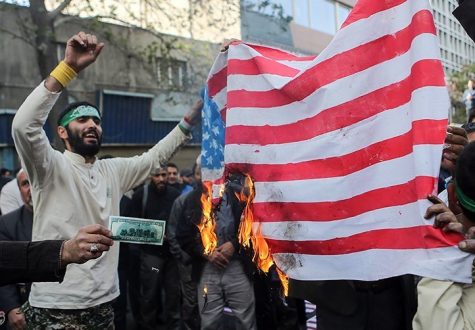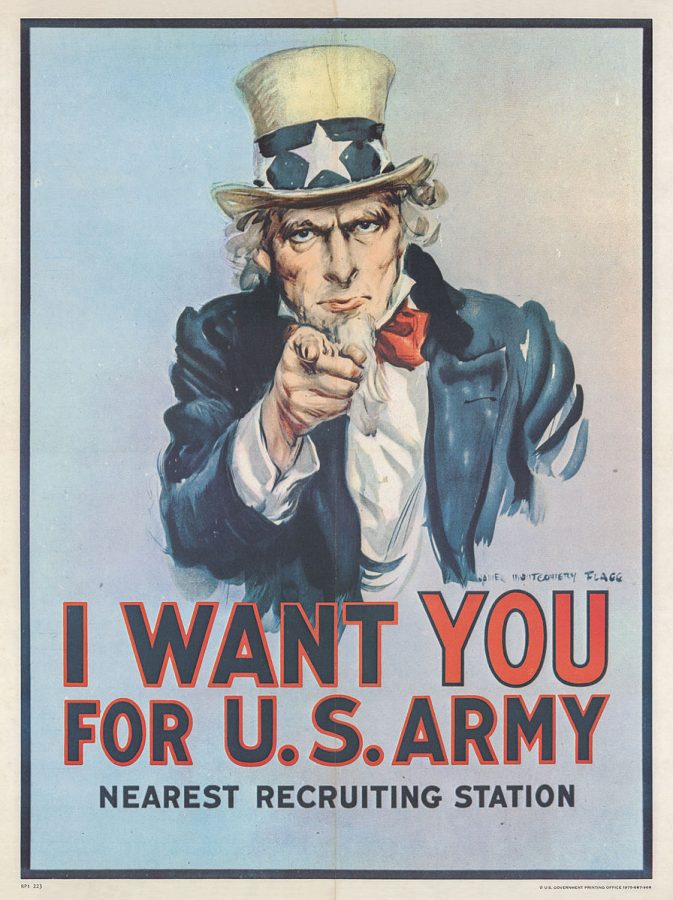Could There Be a Draft?
As reported by the University of Michigan, between the years of 1964 and 1973, the U.S military drafted 2.2 million Americans, ages 18 to 25, to fight in the Vietnam War. To some draftees, the war was justified, and they were honored to serve their country. However, to many others, the draft seemed like a death sentence. From intentionally failing aptitude tests to fleeing the country altogether, men went to extremes to avoid being drafted. For those men who were not drafted, but chose to enlist, 80% did not have a college education and came from poor families.
Christian Appy stated the soldiers were, “powerless, working-class teenagers sent to fight an undeclared war by presidents for whom they were not even eligible to vote.”
History may be repeating itself. On January 3rd, Iranian military commander Qassem Soleimani was assassinated by an air raid in Baghdad ordered by President Trump. Since then, tensions between both countries have risen immensely, causing people to question the possibility of a war. As America sent over 3,000 soldiers to the Middle East in response to the assassination, the Iranian government vowed to seek revenge on the US and President Trump. In retaliation, Iran launched missile strikes early Wednesday, January 8, morning at Iraqui bases housing American soldiers, resulting in no casualties.
However, it doesn’t seem their desire for vengeance is fulfilled; According to The New York Times, Abdollah Araghi, a member of Iran’s joint chiefs of staff, stated they will “impose a harsher revenge on the enemy in the near future.”
Following Iran’s attack, President Trump signaled that there would be no further strikes in an attempt to de-escalate the conflict between the countries. Yet, Americans are still concerned about the fate of the country. Particularly after The Ukrainian International Airlines (UIA) flight PS752 was shot down by a missile, believed to be a mistaken attack by Iran who thought the plane was a threat, not a passenger jet. All 176 people civilians aboard were killed.
Additionally, many people around the world are confused about the evidence that lead the assassination Soleimani. Secretary of State Mike Pompeo spoke with CBS News on America’s decision to instigate, saying, “we made the right decision to take out this terrorist. [Soleimani] not only caused enormous death and destruction throughout the region, killed hundreds of Americans over the years, but had done so in the past couple of days, killed an American on December twenty seventh.”

Despite the government’s efforts to reassure the people, the general public became fixated on the chance the US may go to war. As the new decade began, an overwhelming surge of tweets, posts, and articles suggested many were fearful a war would lead to the implementation of a draft, as seen throughout history.
“World War III” started trending on Twitter and debates arose over the details of the draft, including female participation. As of now, only men between the ages of 18 to 25 are required to register for selective service. While this could change in the future, it would entail the establishment of new legislation.
However, as tension is slowly decreasing, it seems these discussions do not need to be had at this point in time. Connecticut College’s assistant professor of Government and International Relations, Eric Fleury, told USA Today that “the likelihood of a draft is astronomically small,” as the decision would be “militarily impractical and politically toxic.” Currently, America has a sufficient amount of people to serve in Iran, but if the situation escalates to an emergency that could change.
On January 8th, President Trump addressed to the American public, reminding them that America is safe and their government has the country’s best interest in mind. The US government is confident they did what was necessary in order to protect its people, and believes it rightfully established the notion Iranian leadership must understand: “attacking Americans is not cost free” (CBS News). That cost, however, could one day be paid by men, and perhaps women, who are drafted. For now, the draft remains solely a part of history.

Kate Riccio is a senior at Hamilton-Wenham. She enrolled in journalism because she is interested in pursuing it in the future. She likes playing lacrosse,...

Jordan Reader is a senior at Hamilton-Wenham. She decided to sign up for journalism because she enjoys writing and thought it would be fun. She is new...







